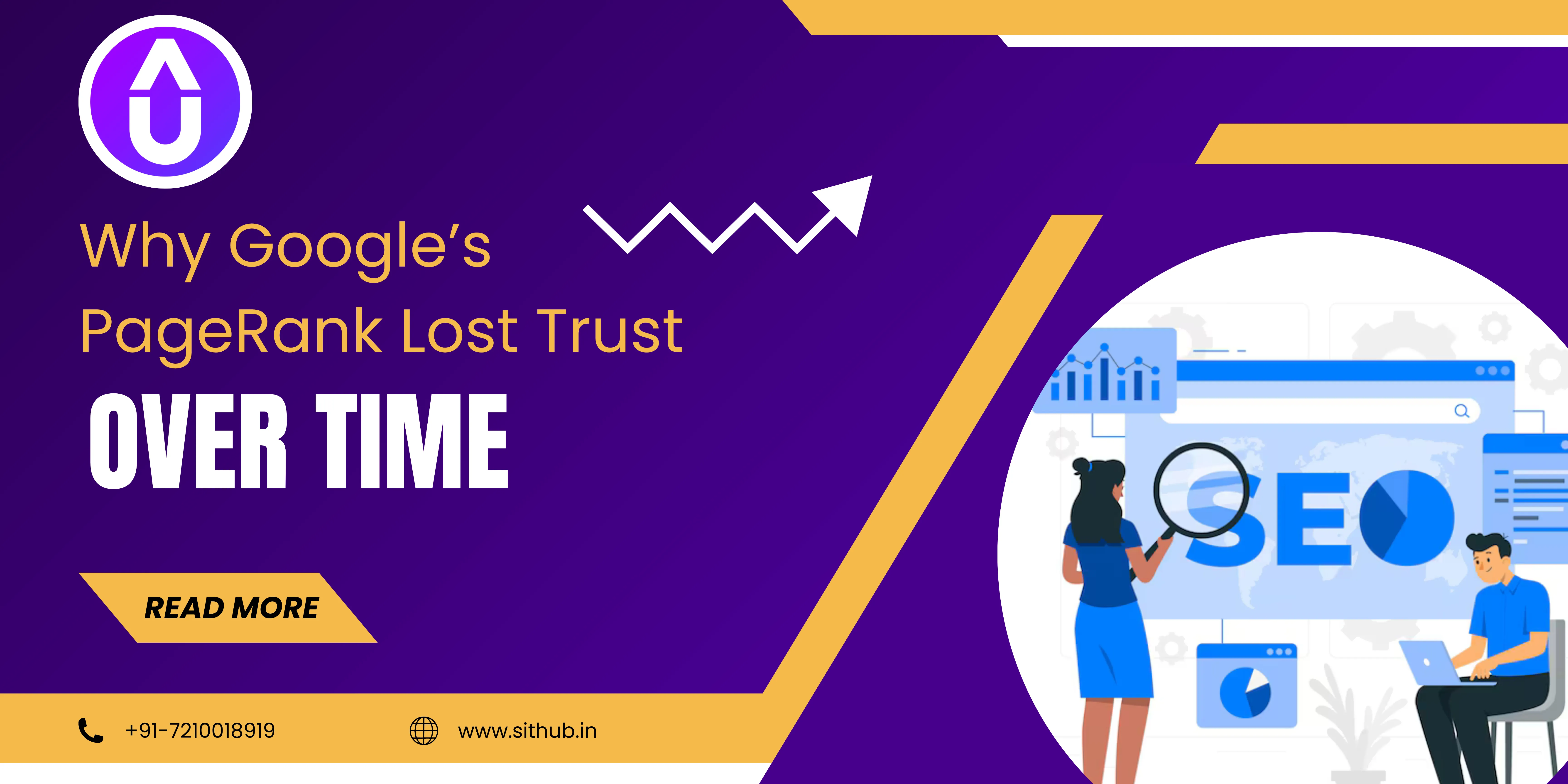
What is Page Rank?
PageRank is a Google algorithm developed by Google's founders, Larry Page and Sergey Brin, in the 1990s. It was created to rank website pages in search results based on the number and quality of links pointing to them. Imagine the internet as a vast network of web pages connected by hyperlinks. PageRank treats these hyperlinks as "votes" from one page to another, but not all votes are equal. A link from a highly trusted website carries more weight than one from a lesser-known site.
This concept is similar to how academic research is cited—papers with more citations from respected sources are considered more important. PageRank helped Google provide more relevant and trusted search results.
Why Did PageRank Lose Trust?
Over time, many webmasters started manipulating the system to artificially boost their PageRank. Common tricks included:
- Link Farming: Creating networks of websites linking to each other without providing real value to users.
- Buying Backlinks: Purchasing links from other websites to increase PageRank unnaturally.
These manipulations led to search results that sometimes favored pages with high PageRank scores but low-quality content. So, To solve this issue, Google introduced measures like the "nofollow" attribute in 2005, allowing webmasters to indicate that certain links should not influence PageRank. With Google's efforts to avoid manipulative link-building methods, some website owners still use methods such as purchasing links or participating in link schemes to improve their search rankings. This caused Google to improve its algorithms to detect and neutralize such manipulations, ensuring that search results highlight high-quality, relevant material.
Current Relevance of PageRank
Today, PageRank is just one of many factors Google may consider when ranking a page. Google's algorithms have been changed to prioritize delivering the most relevant and high-quality content to users and also consider different signals beyond just link structures.
Why PageRank Gained So Much Attention
Better Than Older Search Engines:
Before PageRank algorithms, search engines like Google ranked web pages based on how many times a keyword appeared on that page. So websites tried to manipulate rankings by keyword stuffing in the webpages and then page rank came into the market and introduced a new way to give importance to a web page by link structures. It considered each hyperlink as a vote for linked pages. This method provides more accurate and relevant search results from its competitors.
Page rank created a better competition based on their backlinks not just stuffed keywords. So now websites are not just dependent on keywords, they also need to earn quality backlinks from trustable websites in their niche. So people understood this and created high quality content. So others found it valuable enough to link to.
So page rank provides relevant results in search engine result pages and more people get trust on these websites which have linked to others trusted sites that’s why page rank gains so much popularity.
How PageRank Was Designed to Work
- Markov Chains: Markov chains are a mathematical system where you move from one state to another. The important part is that the next state is chosen only by the current state, no matter how you got there. According to PageRank, each web page is considered a "state," and the links between pages are the "transitions" that allow you to move from one page to another. The "random surfer" model is an idea used to explain how people navigate the web. Imagine someone randomly clicking on links from one web page to another, without any specific goal in mind. This is called the random surfer because they are simply jumping from page to another page, based on the links they find.
- How It Works in PageRank: Every page on the web is a "state" in this system. Links between pages are the connections or paths you can follow to go from one page to another. The random surfer has a choice of links to click on. They pick one of those links and transition to another page. So, the surfer keeps clicking on some pages that are visited more than others. This shows that these pages are more important and relevant in the website. PageRank assigns a score to each page based on how frequently it is visited by the random surfer. So, PageRank calculates the importance of a page by checking the probabilities of a random surfer visiting that particular page. The more often a page is visited the higher its PageRank score.
How and Why PageRank Got Manipulated
People found ways to manipulate this system to rank higher, without offering real value to users and here are some way used by many website or user:-
- Link Farming: Link farming is a group of websites that link to each other not to share valuable content, but just to artificially increase PageRank. These websites were created only for the purpose of linking, not to help users. For example, it's like in a race competition where an award is given to everyone even if they don’t deserve it. They tricked Google into thinking that these sites were popular and useful. But the content was usually poor or unrelated, and users didn’t benefit at all. So, it was just a way to fool the algorithm. Over time, Google caught this and updated its algorithm, and websites that were using link farms got penalized and removed from search results.
- Paid Links: Many website owners started selling backlinks to other websites in exchange for money. These backlinks were not earned naturally, but bought just to increase PageRank. These backlinks violated Google’s guidelines and were not genuinely earned by quality content. This allowed websites with more money to rank better, even if their content wasn’t useful, which was unfair. That’s why Google introduced Nofollow tags. If Google detects paid links, then both the buyer and seller get a penalty.
- Spammy Guest Posts & Comments: Some people started posting low-quality articles (guest posts) on random websites or blogs and inserted backlinks to their own sites to get a higher PageRank. Others dropped links in the comment sections of blogs and forums, even when the topic was not related. These backlinks were not naturally earned and were manually placed just to increase PageRank. The posts were irrelevant, poorly written, and had no real readers. Now, Google has improved its algorithms to detect these types of backlinks and devalue them.
- Private Blog Networks (PBNs): A Private Blog Network (PBN) is a group of websites owned by one person or company. These websites are made to look like normal websites, but their real goal is to pass link juice to a main site they want to rank higher. They generally hide their connections from users and search engines. These websites created fake popularity for the targeted website. People often use low-quality content, and the sites exist only for SEO purposes. But Google launched algorithms like Penguin, which detect fake backlinks and penalize them.
How Google Responded to PageRank Abuse
To stop this page rank manipulation google has launched some updates in algorithms and with manual penalties and here is in detailed:-
So, when Google human reviewers see that a website is breaking its rules then they take direct actions against the websites and especially for link manipulation. So google penalized the complete website and the result is the website being removed by search result or in lower rankings.
- Penguin (2012): Google launched new algorithms like Penguin which targeted websites using link-building tactics such as link farming, comment spam, paid links, and PBN links. This algorithm focuses on the quality of backlinks, not just the quantity. Websites with unnatural or spammy backlinks were penalized to improve search result quality.
- Panda: Panda algorithm focused on the quality of content. If a website had thin content or duplicate content, it would be negatively affected in the search rankings. So, websites with low-quality or spammy content were pushed down in search results, encouraging content creators to focus on originality and value.
-
Nofollow Attribute: Google also introduced a solution for bad or untrusted links known as the "nofollow" attribute. This is added in the link tag like
rel="nofollow". When a webmaster includes this attribute, it tells Google not to pass PageRank through that link. This helps prevent low-quality or paid links from affecting a site’s ranking.







